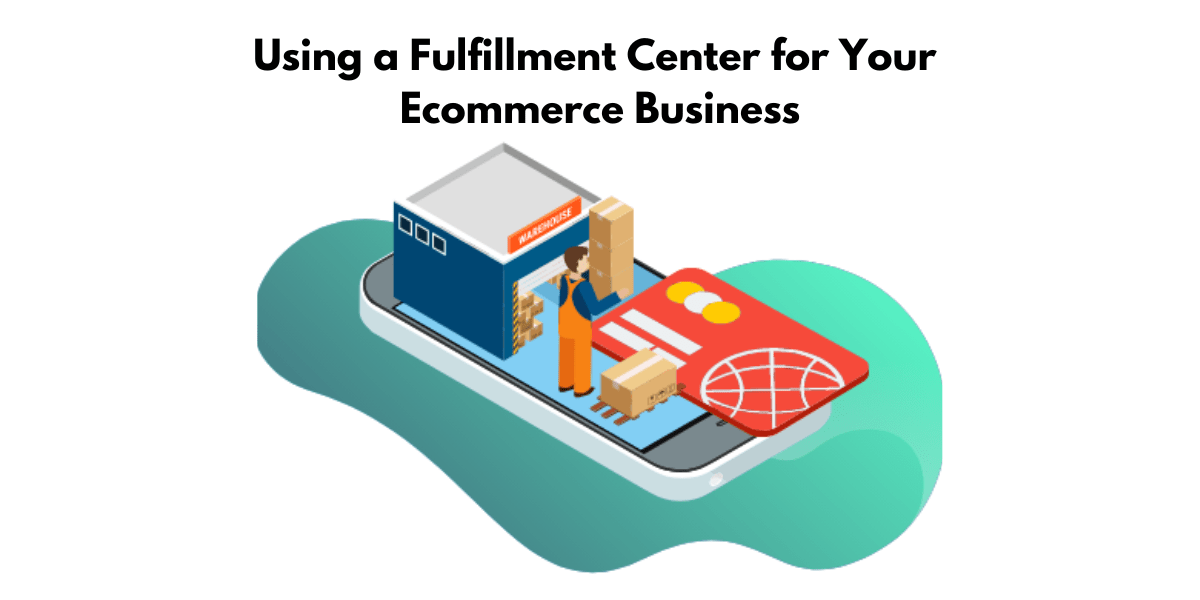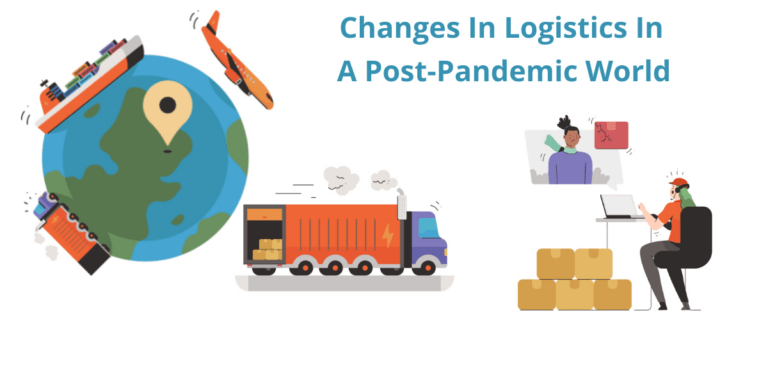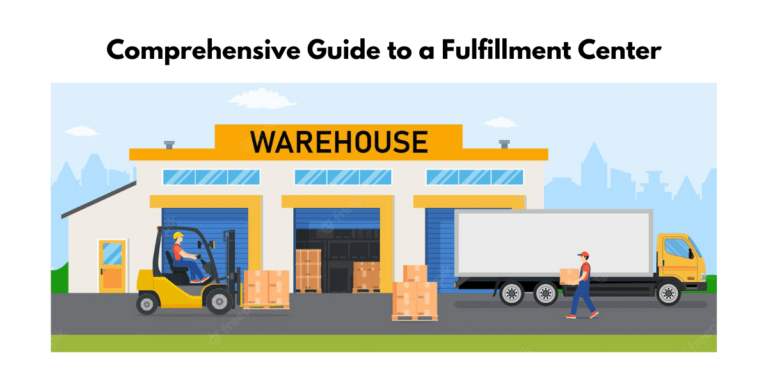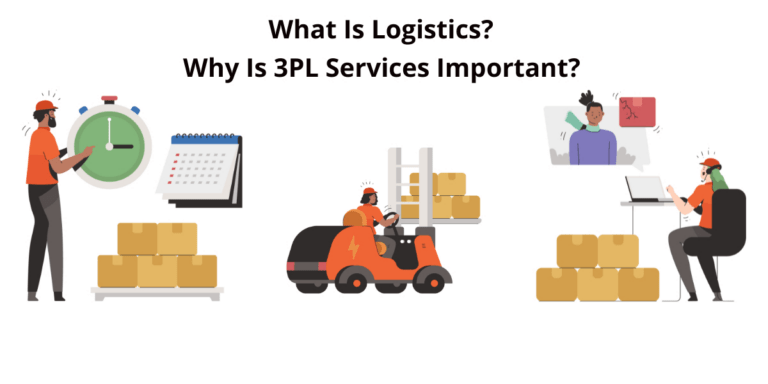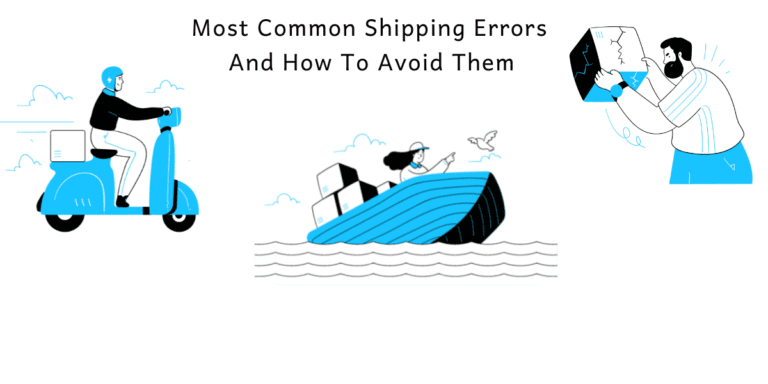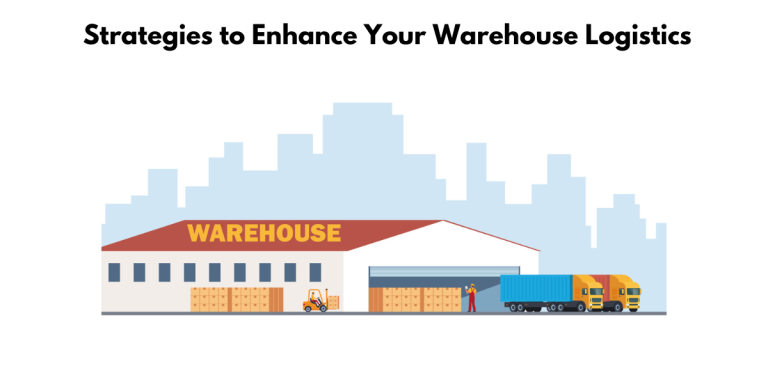What is a Fulfillment Center and How Can it Help Your Ecommerce Sales?
How Can a Fulfillment Center Help Your Ecommerce Sales?
A fulfillment center is a type of shipping warehouse that stores and ships products on behalf of ecommerce businesses. When an order comes in, the fulfillment center picks, packs and ships the product to the customer.
Many small businesses outsource their storage and shipping needs to a third-party fulfillment center because it’s cost-effective and frees up time so they can focus on other aspects of their business.
If you’re considering using a fulfillment center for your ecommerce business, here are a few things to keep in mind.
What is a fulfillment center?
A fulfillment center is a warehouse that helps businesses store and ship their products. Businesses can outsource their storage and shipping needs to a third-party company by using a fulfillment center. This can free up business time and resources, allowing them to focus on other aspects of their operations. Fulfillment centers can also give businesses access to a wider range of shipping options and discounts.
What does a fulfillment center do?
A fulfillment center is a part of the supply chain and serves as the hub for all logistics processes needed to get a product from the seller to the customer. It handles the entire order fulfillment process, ranging from order picking and processing to packaging and shipping. The information is forwarded to a 3PL provider or fulfillment center when a customer places an order. The center then takes the order, gathers the purchased items from its inventory, packages them up, and hands them over to a shipping carrier for delivery to the customer. Ecommerce fulfillment services also work with retailers, e-commerce companies, corporations, and others to fulfill B2B and B2C orders, shipping goods to end-users. By taking the burden off your shoulders, a fulfillment center helps you process customer orders more quickly and efficiently.
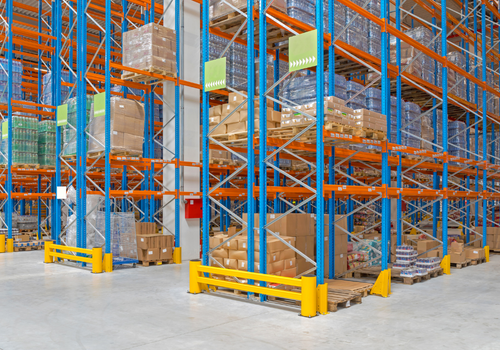
How does having a fulfillment center help your ecommerce sales?
If you have an ecommerce business, you know how important it is to have a fulfillment center. A fulfillment center can help your business in many ways, including:
No need to find your own warehouse space
A fulfillment center can help ecommerce businesses optimize their warehouse space, freeing up time and resources that can be used elsewhere. Fulfillment centers manage inventory, eliminating the need to pack boxes and run to the post office daily. By working with a 3PL, businesses can flex their shelf space depending on their sales volume, paying only for the space they use. Outsourcing storage, packing, and shipping to a 3PL can help businesses reduce overhead costs such as space, quality control, hiring employees, and buying packing supplies. Warehousing solutions are designed for businesses to store products for an extended period, and leasing warehouse space can be more cost-effective than buying for mid-sized and small businesses. Small ecommerce sellers may also choose to rent more cost-effective space, such as local lockers or inventory storage units if they don’t have space at home.
Outsourced inventory management & shipping
Outsourcing inventory management and e-commerce fulfillment can be hugely beneficial for businesses, as it allows them to focus on the important aspects of running their business, such as marketing, customer service, and product management. By partnering with an experienced 3PL, businesses can take advantage of state-of-the-art inventory management and tracking software, a wide network of warehouses worldwide, shipping carriers, and discounted rates. This provides businesses with operational transparency, service guarantees, fast turnaround times, low order minimums, and no long-term contracts. With outsourcing, businesses can acquire new space and adjust internal processes quickly and easily, allowing them to expand or reduce product offerings anytime. Ultimately, this helps to increase ecommerce sales, as businesses can focus more on the strategic aspects of their business and less on the operational.
Discounted shipping rates
A fulfillment center can help with discounted shipping rates for ecommerce sales by negotiating with shipping carriers to get the best rate on shipping costs. This helps businesses save money on each shipment and grow their profits. It also provides fast turnaround times, affordable shipping and handling for oversized items, low order minimums, and no long-term contracts. Additionally, creating custom shipping boxes, coupons and inserts can help upgrade the packaging to make it more appealing to customers.
Offer 2-day and overnight delivery
A fulfillment center can help ecommerce businesses offer 2-day and overnight delivery to their customers, improving the customer experience and increasing potential sales. With the help of a fulfillment center, businesses can quickly pack and ship orders and utilize shipping discounts to lower the cost of 2-day and overnight delivery. This is a great way to keep up with competitors and ensure customers get their orders quickly. By offering faster delivery speeds, businesses can boost customer satisfaction and loyalty, leading to higher sales and more returning customers.
Improved inventory management
A fulfillment center can help improve inventory management for ecommerce sales by streamlining the supply chain, allowing businesses to free up their time and resources that would have been used to manage inventory, and reducing the risk of mispicking. Fulfillment centers handle inventory, storing, shipping, and returns, eliminating businesses’ need to do so themselves. This can reduce costs and also ensure that items are properly organized, in stock, and can be quickly shipped out to customers. This helps ensure that products are available and that orders are fulfilled quickly and efficiently.
Returns processing
A fulfillment center can help with returns processing by streamlining the process and allowing for easier management. With a fulfillment center, businesses can receive returns and exchanges quickly and easily. The fulfillment center can handle all aspects of the return or exchange, such as picking, packing, and shipping out the new item. Additionally, fulfillment centers typically offer 24/7 support for any questions or concerns, making the return process hassle-free.
It lets you focus on other parts of your business
Having a fulfillment center can help entrepreneurs and ecommerce store managers stay laser-focused on the tasks that will help them scale and make money, as well as free up more time to focus on marketing, customer service, and product management. Outsourcing order fulfillment allows them to eliminate overhead costs such as space, quality control, employee hiring, and packing supplies while utilizing a 3PL provider’s state-of-the-art software for inventory management and tracking. Furthermore, having a fulfillment center closer to its largest customer base can help keep costs down and optimize efficiency. All of these benefits can help entrepreneurs grow their businesses and become more organized in the process.

Best practices for using a fulfillment center with your ecommerce business
There are a lot of factors to consider when you’re running an ecommerce business, and one of the most important is fulfillment. After all, if your customers don’t receive their orders promptly and in good condition, they’re not likely to repeat customers.
That’s why it’s important to partner with a fulfillment center that can meet your needs and help you provide the best possible customer experience. But how do you choose the right fulfillment center? And what are some best practices for working with a fulfillment center?
Here are some tips:
Understand the benefits of using a fulfillment center
Using a fulfillment center for your ecommerce business can bring many advantages. The most notable advantages include savings on shipping costs, long-term storage of inventory, and bulk shipping. A fulfillment center can also reduce the time spent packing boxes and running to the post office. Additionally, it allows you to organize your inventory better, focus on growth-oriented tasks, gain access to new technologies, and get access to strategic locations. All in all, a fulfillment center can be a great asset for ecommerce businesses and can help them save on costs and time.
Investigate different fulfillment centers and determine which one is best for your business
When choosing a fulfillment center for your ecommerce business, there are many things to consider. The first is location. You’ll want to choose a center close to your target market. This will help reduce shipping costs and transit times. You’ll also want to consider the services that each center offers. Some centers offer more comprehensive services than others. Make sure you choose a center that can meet all of your needs.
Consider the sizes and capabilities of the fulfillment centers
When selecting a fulfillment center for an ecommerce business, there are several factors to consider. Estimating the required space and determining the need for transportation is important for strategizing the movement of products. Additionally, a slotting plan should be implemented, and excess or overstocked inventory should be reduced. Receiving, staging, and returns should be monitored, and any damaged products should be disposed of. It is also essential to have a good backup strategy for order fulfillment, analyze data, and compare major e-commerce fulfillment centers based on costs, services, minimum requirements, and account management. Warehouses and fulfillment centers differ in their operations and services, with warehouses mainly for storage and fulfillment centers for preparing and shipping orders. Warehouses generally involve direct delivery to customers and often lack the automation, scalability, and customer service fulfillment centers offer. On the other hand, fulfillment centers offer a range of services. They are often equipped with the latest technology to make product storage, packing, and shipping efficient and cost-effective.
Evaluate the shipping and packaging services offered by the fulfillment center
When selecting a fulfillment center for your ecommerce business, there are several aspects you should evaluate. First, look at each company’s quality of service and functionality, taking into account order turnaround time, shipping partner options, size of fulfillment center network, and accuracy rate. Additionally, consider how the service integrates with ecommerce shopping carts, marketplaces, operational tools, and solution providers associated with your store. Secondly, take advantage of the fulfillment center’s courier discounts and their ability to ship from multiple locations to reduce the number of shipping zones crossed. Finally, examine the pick and pack fulfillment services provided, including order picking, processing, packing, and shipping, as well as customer service and returns. By researching these criteria, you can select the best fulfillment center for your ecommerce business.
Familiarize yourself with the customer service experience
Familiarity with the customer service experience can help you use a fulfillment center with your ecommerce business by ensuring that you choose a 3PL provider that provides an unmatched customer service experience. This includes having expertly trained agents who understand your program’s core aspects and looking for a company with similar values and culture. Additionally, looking for a provider with highly functional software that provides transparency within the fulfillment process and scalability that can grow with your business is important. Doing so can ensure that your customers receive a satisfactory experience and that your needs are met.
Analyze the returns and order processing policies of the fulfillment center
Analyzing a fulfillment center’s returns and order processing policies can help your ecommerce business in various ways. Understanding the costs associated with returns, exchanges, and refunds allows you to adjust your pricing strategies to maximize profits. Additionally, understanding the turnaround time for orders and returns can help you better plan customer service expectations. Negotiating shipping costs with a fulfillment center can save you money on every shipment, allowing you to offer free shipping or discounts to your customers. Finally, because fulfillment centers are equipped to handle larger orders, you can easily scale your business as demand increases.
Check out the storage and inventory management services of the fulfillment center
A fulfillment center offers various storage and inventory management services to keep track of inventory and ensure customers receive their orders quickly and accurately. These services include warehousing to store large quantities of inventory over a long period, inventory tracking tools to monitor and proactively reorder products, and the ability to scale your fulfillment operation to meet the needs of your business. Fulfillment centers can also offer expedited delivery options such as same-day and two-day shipping.
Assess the security measures in place at the fulfillment center
Review the warehouse layout: The layout should be efficient, with each area dedicated to an individual task. This way, you can identify the areas that need to be secured and take measures to protect the safety of your products.
- Establish access control measures: Establish access control measures to ensure that only authorized personnel can enter the warehouse. You can use security cameras, access control systems, and biometrics to monitor who is allowed in the fulfillment center.
- Implement safety protocols: Develop safety protocols for the workers at the fulfillment center. This includes guidelines on how to safely handle products, how to use the proper protective equipment, and general safety regulations.
- Check security systems: Make sure your systems are up to date and functioning properly. Inspect the security cameras and access control systems to ensure they are operational.
- Train the staff: Train your staff on the proper protocol and safety measures when handling products. This includes training on properly using the safety equipment, safety protocols, and proper handling of products.
- Regularly inspect the facility: Regularly inspect the fulfillment center to ensure that the safety protocols and security measures are followed. Look for any irregularities or signs of wear and tear.
- Monitor inventory: Monitor the inventory at the fulfillment center to ensure it is properly managed and stored securely. Make sure that the inventory is accurately recorded and that it is regularly checked for quality and accuracy.
Consider the costs and savings associated with using a fulfillment center
Using a fulfillment center for ecommerce can result in both costs and savings. On the one hand, there are costs associated with using a fulfillment center, such as warehouse space, equipment, warehouse management, staff salaries, worker’s compensation and liability insurance, packaging supplies, postage, and more. These costs can vary from provider to provider, with some offering a flat rate while others adding individual fees per task, such as picking and packing. On the other hand, savings are associated with using a fulfillment center, such as avoiding the hassle of storing inventory and dealing with ecommerce warehousing, saving money on every shipment, and freeing up time to grow your business.
Create a strategic plan for using a fulfillment center
Creating a strategic plan is essential to use a fulfillment center with your ecommerce business successfully. A strategic plan should include evaluating the space needed, determining the need for transportation, making a slotting plan, reducing excess and overstocking of inventory, clearing out receiving, staging and returning, and disposing of damaged products. A plan will help save time, money, and resources while allowing the business to focus on more important tasks such as marketing, product development, and customer service. This will help to ensure the smooth operation of the fulfillment center and lead to an increase in customer satisfaction.
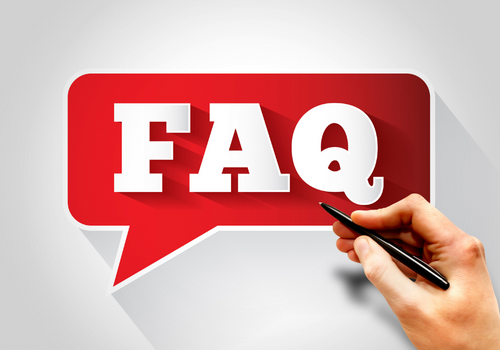
FAQs
Here are some of the most frequently asked questions about fulfillment centers:
What is a fulfillment warehouse?
A fulfillment warehouse is a building used to store goods for short periods, provide services like packing, labeling, packaging, and shipping orders to customers, and manage incoming inventory and customer returns. It is often interchanged with the term “fulfillment center,” which can lead to confusion because fulfillment centers are different from traditional warehouses. Fulfillment warehouses are usually run by third-party logistics (3PL) companies that service multiple merchants and are typically larger than 25,000 square feet. Fulfillment warehouses provide an efficient way for businesses to meet their eCommerce needs and fulfill customer orders.
How does order fulfillment work?
A fulfillment center is a warehouse that helps store and ship items for ecommerce businesses. By outsourcing storage and shipping to a fulfillment center, businesses can save time and money while ensuring that orders are fulfilled accurately and quickly.
Fulfillment centers typically use a pick-and-pack system to fulfill orders. This means that each order is individually picked from the shelves by a fulfillment center employee and then packed into a box for shipping. This system helps to ensure accuracy and speed, as each order is handled separately rather than in bulk.
In addition to storage and shipping, fulfillment centers can provide other services, such as returns processing and customer service. This can be a valuable addition for businesses that do not have the time or resources to handle these tasks themselves.
What is an Amazon fulfillment center, and how does it work?
An Amazon fulfillment center is a warehouse where incoming orders are received, stored, packed, and shipped to customers. This service is provided by Amazon’s Fulfillment By Amazon (FBA) program, which allows sellers to store their inventory at Amazon’s fulfillment centers. When customers order products through Amazon’s platform, their orders are processed, packed, and shipped from Amazon fulfillment centers. The fulfillment centers also provide customer service and handle returns for FBA sellers.
What are the costs associated with using a fulfillment center?
The costs associated with using a fulfillment center vary depending on the provider. Generally, they include a flat fee for integrating your store with the fulfillment center and fees for each order processed. Additional fees may include a large holding fee for items that remain in the center for an extended period, particularly after the first month. Additional costs may include shipping fees and costs associated with replenishing inventory, such as restocking fees. Overall, fulfillment centers offer cost-effective solutions for ecommerce merchants, but it’s important to evaluate the services offered by different providers to find the most cost-effective option.
What is the difference between a fulfillment center and a warehouse?
The primary difference between a fulfillment center and a warehouse is their purpose. Warehouses are primarily used for long-term storage and are usually owned or used by an individual business or company. They are typically industrial spaces that are designed to store inventory in bulk. On the other hand, fulfillment centers provide temporary storage for items that will soon be shipped to customers. Fulfillment centers can offer picking and packing, shipping, and negotiating rates with couriers.
How do fulfillment centers store and manage inventory?
Fulfillment centers are designed to store and manage inventory quickly and efficiently. The process begins when inventory is received at the fulfillment center. The inventory is sorted, shelved, and binned in its respective locations.
How do fulfillment centers ensure quality control?
A fulfillment center is a warehouse where inventory is stored, and orders are processed, packaged, and shipped. Quality control is a process to ensure that products meet certain standards of excellence. Fulfillment centers use quality control measures to ensure that the products they ship meet the standards set by the manufacturers. There are several ways in which fulfillment centers ensure quality control, including inspection, testing, and packaging.
What is the average turnaround time for orders from a fulfillment center?
The average turnaround time for orders from a fulfillment center is less than 24 hours, as most centers strive to turn inventory over quickly to save on warehousing fees. With the right technology and operations, many fulfillment centers can offer same-day or two-day shipping to customers.
- Warehouse Logistics: 10 ways to elevate your business’s SCM - November 2, 2023
- What is a Fulfillment Center and How Can it Help Your Ecommerce Sales? - January 24, 2023
- What is a Fulfillment Center: A Comprehensive Guide - December 22, 2022

